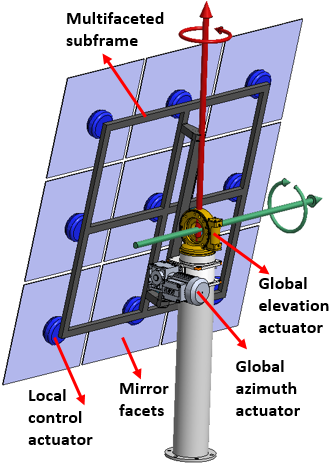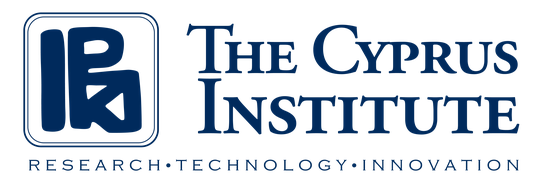
Current solar thermal CST tower technology has a clear limitation in terms of the optical performance of the heliostat field and current commercial plants are approaching these limits. The annual optical efficiency of large solar tower systems is in the 60% to 70% range even for tower heights between 200 and 300 meters.
Losing 30% to 40% of the energy of the direct solar radiation reaching the solar tower system just in the heliostat field, drastically limits the possibilities to substantially increase the cost competitiveness of solar tower technologies in the future. The underlying reason for the relatively low optical efficiency of commercial large scale solar towers is the concept itself.
Current technology is mono-tower and mono-receiver. This means that all heliostats in the heliostat field have to aim to the same region of space during the whole day and every day of the year. When this is the case, geometry dictates that relevant losses will increase with heliostat field size. Thus, current mono-tower and mono-receiver solar tower technology is intrinsically limited in their optical performance particularly for large heliostat sizes and, therefore, particularly for large powers. To overcome these limitations, and substantially increase the optical efficiency of CST systems of any size, multi-tower systems have been proposed, in which several tower/receiver subsystems are present sharing a heliostat field in such a way that, at every instant of time, every heliostat in the heliostat field aims to the receiver that will maximize its instantaneous optical efficiency.
This proposal aims to advance to TRL 4 a multifaceted variable focal length heliostat (VariFocalH) that can continuously change not just its orientation, as current heliostats do, but also its shape, providing the key enabling technology for the uptake of multi-tower multi-aiming CST systems and, in general, enhancing the wider penetration of solar-thermal renewable energy systems into the local, regional and global energy markets.
“This work is funded by the European Union and the Republic of Cyprus through the Research and Innovation Foundation within the Framework of the “Proof of Concept for Technology / Knowhow Applications” Programme (Project CONCEPT/0521/0064)”

